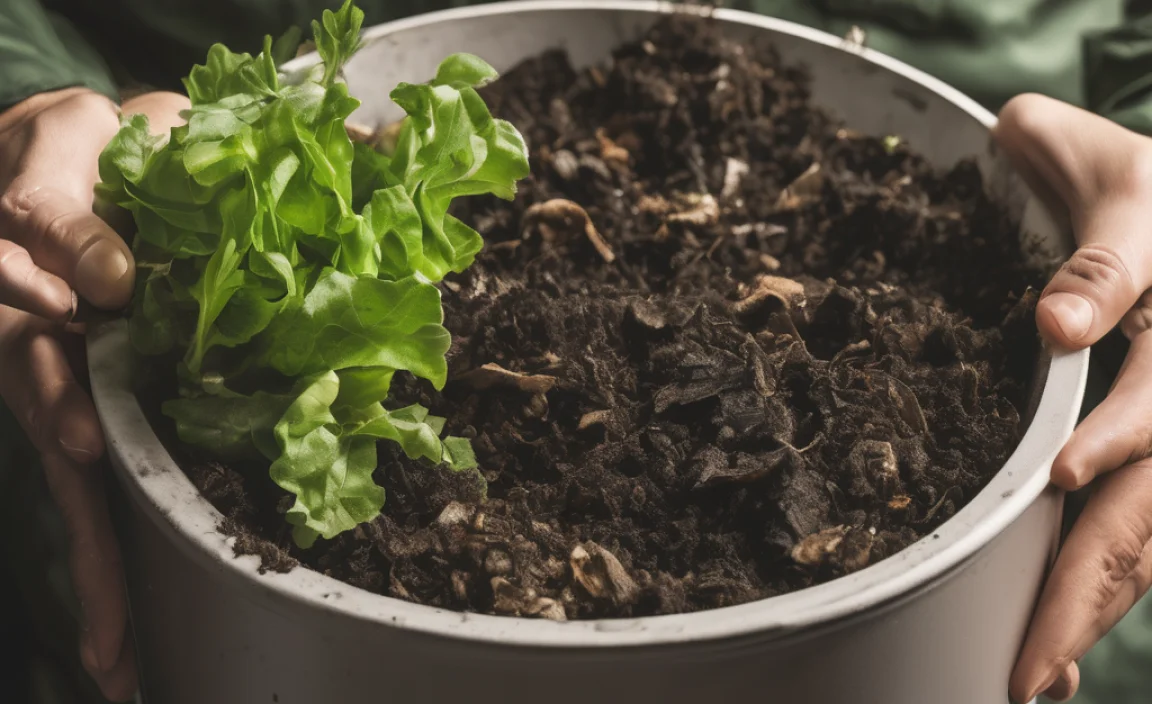Ever looked at your compost bin and wondered if you’re doing it right? It’s a common worry for us home composters. Too much of one thing, not enough of another, and suddenly your heap isn’t cooking as well as it should. Don’t sweat it! Getting the right mix is simpler than it sounds. We’re going to break down the magic number for your compost—the “greens” and “browns”—so you can turn your kitchen scraps and yard waste into garden gold. Ready to get your compost cooking? Let’s dig in!
Compost Heap Ratio: Your Essential Guide to a Thriving Pile
Hey everyone, Troy D Harn here from TopChooser! So, you’ve decided to join the composting crew – awesome! It’s a fantastic way to reduce waste and create amazing fertilizer for your garden, all while saving a few bucks. But here’s where many beginner composters get a little stumped: what exactly goes into the compost bin, and how much of it?
Understanding your compost heap ratio is the secret sauce. It sounds a bit technical, but trust me, it’s mostly about balance. Think of it like baking a cake – you need the right proportions of ingredients for it to turn out perfectly. The same goes for your compost. Too many wet, “green” ingredients can make your pile slimy and smelly. Too many dry, “brown” ingredients can make it sit there doing nothing.
The good news? It’s not rocket science! We’re going to walk through exactly what “greens” and “browns” are, why the ratio matters, and how to easily achieve that sweet spot. By the end of this guide, you’ll be a composting ratio pro, ready to create a black gold that’ll make your plants sing. Let’s get started!
Why the Compost Heap Ratio Matters
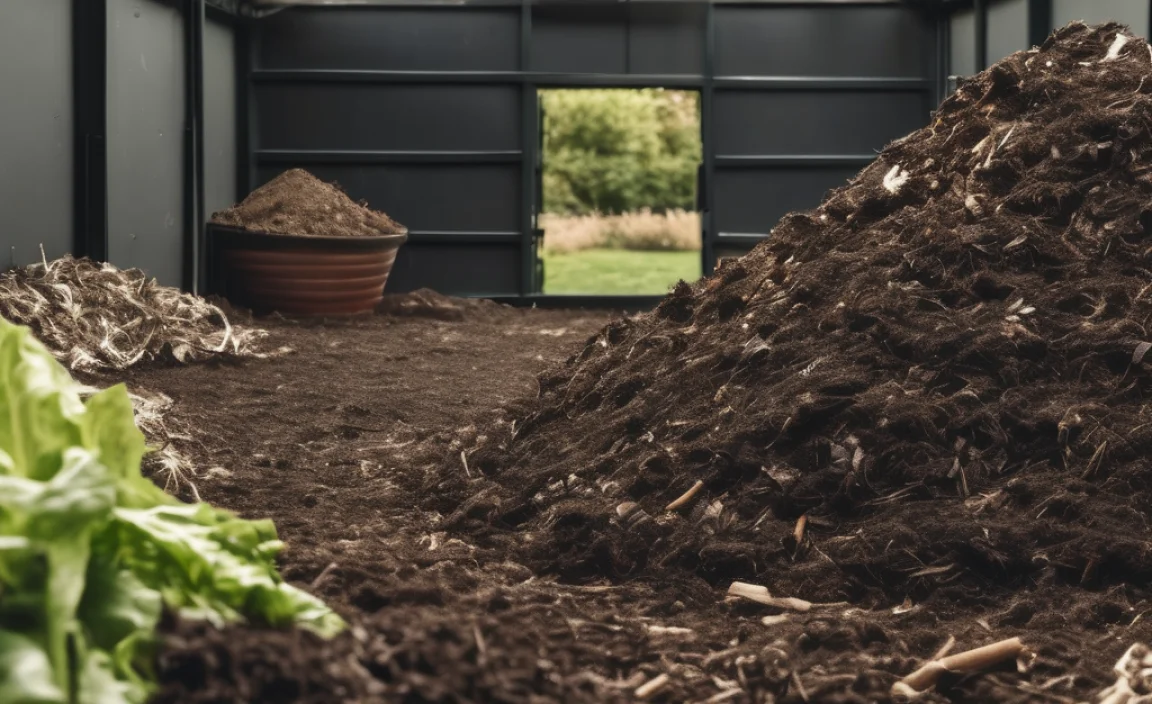
Composting is essentially a controlled decomposition process powered by tiny organisms like bacteria and fungi. These little workers need a balanced diet to thrive and do their job efficiently. This is where the “greens” and “browns” come into play.
Think of “greens” as the nitrogen-rich materials, and “browns” as the carbon-rich ones. These two elements are the primary energy sources for your compost microbes. Getting the compost heap ratio right ensures:
- Faster Decomposition: Microbes work best when they have the right mix of carbon and nitrogen to fuel their activity.
- Reduced Odors: An imbalanced pile, especially one with too many greens, can become anaerobic (lack oxygen) and develop unpleasant smells like ammonia or rotten eggs.
- Better Aeration: Brown materials, with their bulkier structure, help create air pockets in the compost pile, which is crucial for aerobic decomposition.
- Consistent Heat: A good ratio can help your compost pile heat up properly, which speeds up decomposition and helps kill off weed seeds and pathogens.
Decoding “Greens” and “Browns”
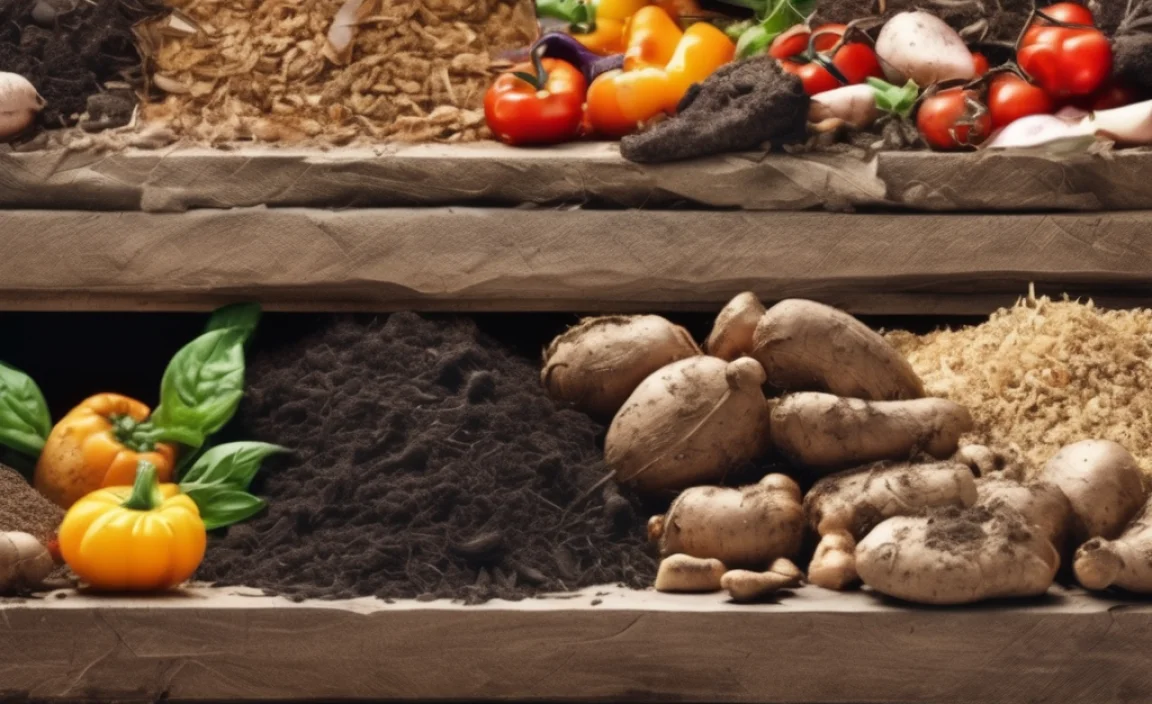
Let’s break down what makes something a “green” or a “brown.” This is the fundamental building block for understanding your compost heap ratio.
What are “Greens”? (Nitrogen-Rich Materials)
Greens are generally moist, fresh materials that are rich in nitrogen. Nitrogen is like the protein for your compost microbes, giving them the energy to multiply and work hard. If your pile is slow-moving or doesn’t seem to heat up, you might need more greens.
Examples of “Greens”:
- Fruit and vegetable scraps (peels, cores, rinds)
- Coffee grounds and tea bags
- Grass clippings (in thin layers)
- Plant trimmings (soft, leafy parts)
- Eggshells (crushed)
- Manure from herbivores (cow, horse, rabbit, chicken)
- Seaweed
A Note on Grass Clippings: While a great source of nitrogen, large clumps of grass clippings can mat together and create a slimy, smelly layer that blocks airflow. It’s best to add them in thin layers, letting them dry slightly if possible, or mixing them with brown materials.
What are “Browns”? (Carbon-Rich Materials)
Browns are typically dry, woody materials that are rich in carbon. Carbon is the energy source for your compost microbes. Browns also add bulk and air pockets to your compost pile, which is vital for preventing it from becoming a dense, smelly mess and for ensuring good airflow. If your pile is too wet, smells bad, or is full of stagnant water, you probably need more browns.
Examples of “Browns”:
- Dried leaves
- Straw and hay
- Cardboard (shredded, non-glossy)
- Paper (shredded, non-glossy – newspaper, junk mail)
- Twigs and small branches (chopped or shredded)
- Sawdust and wood chips (from untreated wood)
- Pine needles
- Shredded paper egg cartons
- Corn stalks
A Note on Cardboard and Paper: Make sure to shred these into smaller pieces for faster breakdown. Avoid glossy paper or heavily printed colored inks, as these can contain plastics or heavy metals that aren’t great for your compost. Even plain brown paper bags work well.
The Magic Compost Heap Ratio: Greens to Browns

So, how much of each should you add? The general rule of thumb for a healthy compost pile is a ratio of approximately 2 to 3 parts “browns” to 1 part “greens” by volume.
Why volume? It’s easier for most home composters to eyeball. Imagine you have a bucket of greens; you’ll want about two to three buckets of browns to mix with it. It’s not an exact science, and nature is forgiving, so don’t stress too much about getting it perfect down to the last leaf.
This ratio provides the ideal balance for the microbes: enough nitrogen from the greens for them to multiply and eat, and enough carbon from the browns to provide energy and maintain the structure of the pile for air flow. A healthy carbon-to-nitrogen (C:N) ratio is crucial.
General C:N Ratio Targets:
While we’re talking about volume, it’s worth noting that the actual ideal carbon-to-nitrogen (C:N) ratio for composting science is often cited as around 25:1 to 30:1. This translates loosely to our 2-3 parts brown to 1 part green philosophy.
Let’s visualize this with a table. Remember, these are approximate volumes:
| “Green” Material (Nitrogen-Rich) | “Brown” Material (Carbon-Rich) | Approximate Volume Ratio | Why This Mix? |
|---|---|---|---|
| Fruit & Veggie Scraps, Grass Clippings, Coffee Grounds | Dried Leaves, Shredded Cardboard, Straw | 1 part Green : 2-3 parts Brown | Provides enough nitrogen for microbial activity and balanced carbon for energy and structure. |
| Too many Greens (pile is wet, smells bad like ammonia) | Add more Browns (straw, leaves, shredded paper) | Adjust to increase Brown content | Helps absorb excess moisture, adds air, balances nitrogen. |
| Too many Browns (pile is dry, slow to decompose, no heat) | Add more Greens (kitchen scraps, fresh grass clippings) | Adjust to increase Green content | Provides more nitrogen to speed up the microbial action. |
Putting Your Compost Heap Ratio into Practice: A Step-by-Step Approach
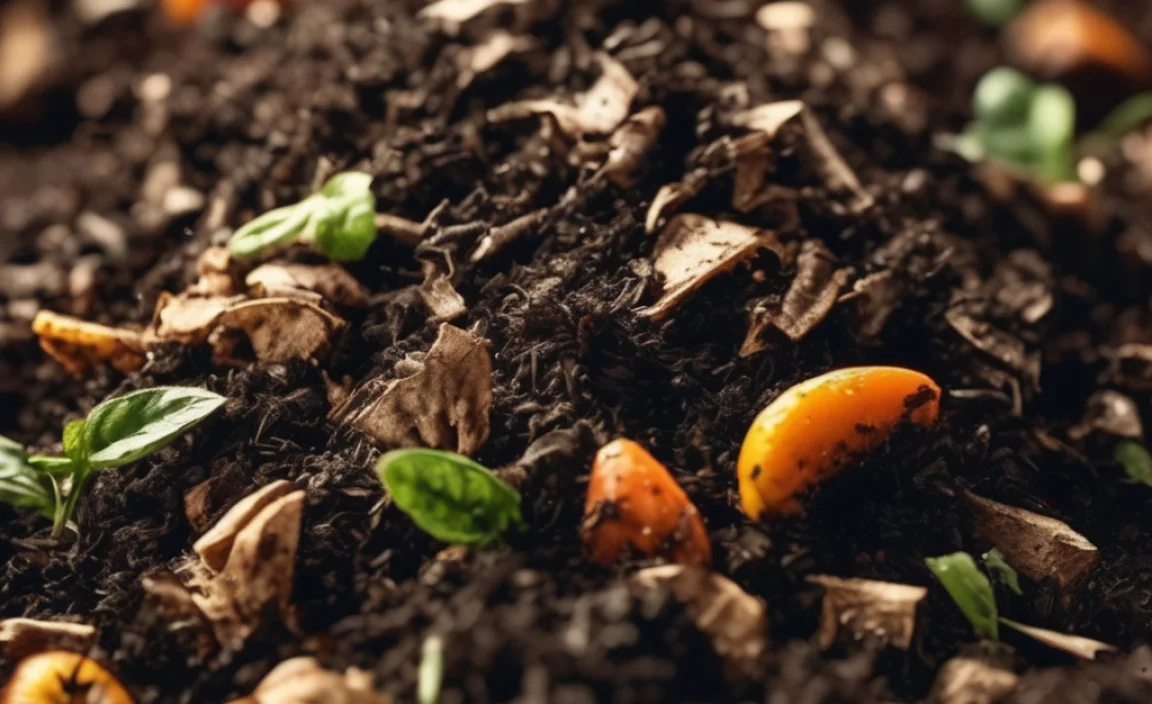
Now, let’s put this knowledge to work! Here’s a simple way to build and maintain your compost pile with the right ratio in mind.
Step 1: Choose Your Spot and Bin
First things first, pick a good spot. It should be somewhat shaded, well-drained, and easily accessible. You can use a simple open pile, a store-bought compost bin, or even build your own. For beginners, a bin is often less messy and helps keep things contained. If you’re building one, consider materials like wooden pallets or wire mesh. For inspiration on building your own, resources like the EPA’s composting guide offer excellent starting points.
Step 2: Start with a Layer of Browns
Always start your compost pile with a base layer of brown material (about 4-6 inches deep). This could be twigs, straw, or shredded cardboard. This layer acts as a foundation, allowing air to circulate from the bottom and preventing your pile starting with wet kitchen scraps from becoming a matted mess.
Step 3: Add Your First Layer of Greens
Next, add a layer of your green materials. This will be your kitchen scraps (like vegetable peels, coffee grounds) or fresh garden waste. Don’t go too thick with this layer – maybe an inch or two.
Step 4: Cover Greens with Browns
This is the crucial step for maintaining your ratio! After adding your greens, cover them completely with another layer of brown materials. This helps to:
- Balance the C:N ratio: Ensuring you have roughly 2-3 times the volume of browns to greens.
- Prevent odors: The browns act as a buffer, trapping smells.
- Discourage pests: Covering food scraps makes them less accessible to unwanted visitors.
- Maintain moisture: Browns soak up excess moisture from the greens.
Keep adding materials in this alternating fashion. Aim for that 2-3 parts browns to 1 part greens ratio with each addition.
Step 5: Chop It Up!
Generally, the smaller the pieces of both greens and browns, the faster they will decompose. If you have large vegetable scraps or thick cardboard, spend a few minutes chopping them into smaller pieces before adding them to the bin. This increases the surface area available for microbes to work on.
Step 6: Aerate Your Pile (Turning)
Your compost microbes need oxygen! Over time, especially if the materials are packed too tightly, the pile can become compacted. Turning your compost pile regularly (every 1-4 weeks, depending on how quickly you want compost) introduces fresh air.
How to Turn: Use a pitchfork or a compost aerator tool to mix the materials, bringing the outer layers into the center and vice-versa. This also helps distribute moisture evenly.
You don’t have to turn it religiously, but doing so significantly speeds up the process. If you have a busy schedule, a “no-turn” compost system can still work, it just takes longer.
Step 7: Monitor Moisture Levels
Your compost pile should feel like a damp, wrung-out sponge – moist but not soggy.
- Too Dry: If it feels dry and crumbly, add some water while turning.
- Too Wet: If it’s soggy and has a sour smell, add more dry brown materials and turn thoroughly to incorporate them.
This is where your compost heap ratio directly impacts moisture. Too many greens lead to wetness, while too many browns lead to dryness.
What NOT to Compost
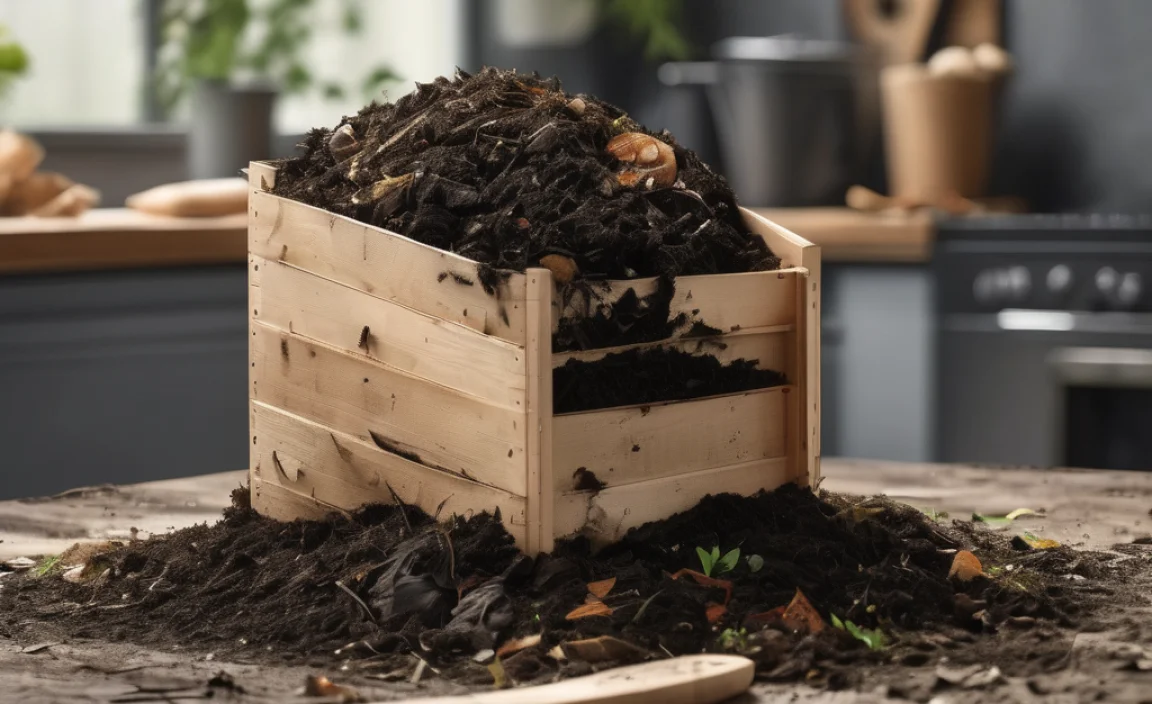
While we’re talking about what to add, it’s equally important to know what to leave out. These items can cause problems rather than contribute to healthy compost:
- Meat, fish, and dairy products: These can attract pests and create foul odors.
- Oily or greasy foods: They slow down decomposition and can attract pests.
- Diseased plants: The pathogens might survive the composting process and spread to your garden.
- Weeds that have gone to seed: Similar to diseased plants, the seeds might not be killed, leading to more weeds.
- Pet waste (dog and cat feces): These can contain harmful pathogens.
- Chemically treated wood or yard waste: Chemicals can harm beneficial microbes and contaminate your compost.
- Coal or charcoal ash: While wood ash is okay in small amounts, coal ash can contain sulfur and iron, which are harmful to plants when concentrated.
Troubleshooting Common Compost Problems
Even with the best intentions, compost piles can sometimes be a bit stubborn. Here are a few common issues and how to fix them, often related to the compost heap ratio.
Problem 1: My compost smells bad (rotten eggs or ammonia).
Cause: Too many “greens” or the pile is too wet and compacted, leading to anaerobic conditions.
Fix:
- Add a generous amount of “brown” materials (like shredded cardboard, dry leaves, or straw).
- Turn the pile thoroughly to incorporate the browns and introduce air.
- Ensure the pile is not waterlogged. If it is, try to aerate it even more and add browns to absorb the excess moisture.
Problem 2: My compost isn’t heating up and decomposition is very slow.
Cause: Not enough “greens” or the pile is too dry.
Fix:
- Add more nitrogen-rich “green” materials (like kitchen scraps, fresh grass clippings, or manure).
- If the pile is dry, water it thoroughly while turning.
- Smaller particle size can also help; chop up any larger browns if needed.
Problem 3: My compost is attracting pests (flies, rodents).
Cause: Exposed food scraps, or certain types of materials being added.
Fix:
- Always bury kitchen scraps deep within the pile and cover them with a layer of brown material.
- Avoid adding meat, dairy, or oily foods.
- Ensure your compost bin is secure and doesn’t have large holes that pests can easily enter.
- Keeping your compost moist but not excessively wet can also deter some pests.
Problem 4: My compost is too wet and muddy.
Cause: Too many “greens” or excess rain without adequate drainage or aeration.
Fix:
- Add a significant amount of “brown” materials (shredded cardboard, straw, dry leaves) to soak up the excess moisture.
- Turn the pile frequently to aerate it and help it dry out.
- If it’s an open bin exposed to rain, consider covering it during prolonged wet periods, but ensure some airflow is still possible.
Benefits of Properly Balanced Compost
Once you’ve mastered the compost heap ratio and your compost starts to cook properly, the benefits for your garden are incredible!
- Enriched Soil: Compost adds essential nutrients and organic matter to your soil, improving its structure, aeration, and water retention.
- Healthier Plants: Plants grown in compost-rich soil tend to be stronger, more resistant to pests and diseases, and produce better yields.
- Water Conservation: Compost acts like a sponge, helping your soil hold onto moisture longer, which means you’ll need to water less often. This is a huge plus for saving water and time, especially during dry spells. Learn more about water-wise gardening practices at university extension sites like University of Arizona Cooperative Extension.
- Reduced Waste: You’ll significantly cut down on the amount of trash you send to the landfill, which is great for the environment.
- Cost Savings: Homemade compost is free fertilizer and soil amendment, saving you money on garden supplies.
- Sustainable Practice: Composting is a fundamental part of a sustainable, eco-friendly lifestyle.
Frequently Asked Questions About Compost Heap Ratio
Here are some common questions beginners have about getting their compost ratio right:
1.What is the ideal compost heap ratio?
The generally recommended ratio is about 2 to 3 parts “brown” (carbon-rich) materials to 1 part “green” (nitrogen-rich) materials by volume. This balance fuels the microbial decomposition process effectively.
2.How can I tell if my compost ratio is wrong?
If your compost smells like ammonia or rotten eggs, you likely have too many greens. If it’s not heating up or decomposing slowly, you probably have too many browns or it’s too dry. A healthy compost pile should smell earthy, not foul.

I am passionate about home engineering. I specialize in designing, installing, and maintaining heating, ventilation, and air conditioning systems. My goal is to help people stay comfortable in their homes all year long.

